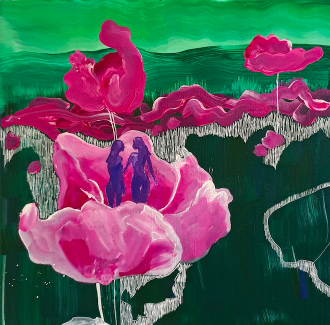


Creating a work of art seems to be a long and complicated process. Artists can spend months or even years on a single painting or sculpture. For centuries, people have been trying to make everything easier with the help of automation, and this has not escaped the art world. The invention of printing, the development of various graphic techniques and, finally, the creation of the first camera obscura streamlined the process of creating artistic creations. New methods for speeding up the artist's work have become so widespread that today everyone carries a camera hidden in their phone in their pocket. For years, the medium of photography was regarded as an extraordinary invention, allowing us to capture only special moments. Nowadays, we take pictures of whatever we want, whenever we want and in any quantity we want. We do not have to worry about exposure times, the quality of the equipment or the length of the activity itself. The general accessibility of the apparatus and this creative method does not make its users professional photographers whose images can be displayed in exhibitions or sold at auction. So what distinguishes fine art photography? What role does it play in today's art market?
Contemporary photographers explore a variety of subjects: abstraction, reportage, nature, portraiture, technology, landscape and much more. In addition to the obvious immortalization of reality, photography can pose questions, encourage reflection and provoke emotion. The automation of the medium of photography has not done away with the artist's creative process. Just taking a photograph can take a fraction of a second. However, what happens outside the lens before the crucial 'snap' is the equivalent of applying the first layer of paint to the canvas. Preparing the concept of the frame, setting up the lens or choosing the right lighting are all activities that are hidden from the viewer of the final result. However, the most important element for creating an exceptional photograph is a sense of the right moment. Whether the photograph is taken in a professional studio or in a crowd of people on the street, capturing an extraordinary performance involves the ability to find and catch that special moment.
In the third and fourth decades of the 20th century, photography began to be recognized as an artistic discipline, and the first photographs were sold as collector's items in the 1970s. Today, photography auctions are a common phenomenon in many auction houses around the world. Historic, unique and experimental photographs are constantly sought after by collectors who recognize the investment and artistic value of photography. The nature of the medium — in terms of reproducing prints or questioning authenticity — means that more and more people are choosing to purchase collectible photography from verified sources, such as art galleries or auction houses. In this way, the collector is assured that the right experts have properly identified the photograph and will confirm its reliability by issuing a certificate. New versions of digital artwork are regularly appearing on the art market, underpinned by new technologies that allow the development of photographic technology and the introduction of innovative solutions.
The Talents auction is coming up, which also offers unique black and white photographs. Each depicts a different subject, differing in concept and artistic trend. The photograph by Sebastian Szostek 'Makeup in the window' (item 73) is an example of capturing the aforementioned special moment in the setting of a block of flats and grey everyday life. Lovers of abstraction should pay attention to another photograph by the same artist — 'Knot' (lot 72) captivates with its simplicity, unique texture and strangely satisfying composition. Franciszek Kruczowski's photographs, on the other hand, allow the viewer to commune with nature. “Silence” (lot 70) is a look at the rural landscape outside the window, while the photograph “Field of June” (lot 71) shows a windy restlessness amidst the cornfields.